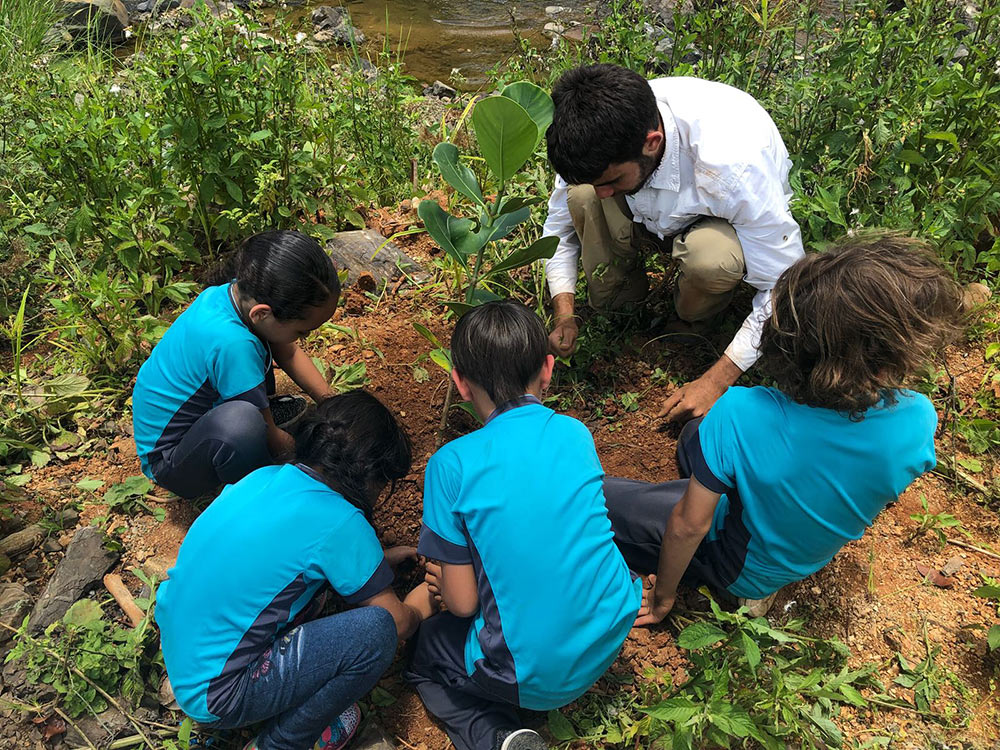Fourteen public schools that have integrated the Montessori method to their curriculum or that are currently undergoing this transformation process under the guidance of Instituto Nueva Escuela (INE) are celebrating that they are remaining open — by planting trees.
“Sembrando nos quedamos” (We’re planting and we’re staying) is the name of this initiative, that with nonprofit environmental organization para la Naturaleza (PLN), establishes a commitment to plant and care of native trees in these initial 14 school campuses.
Among the reforested schools are Antonio Paoli, in Vega Alta; Jesús T. Piñero, in Caguas; Playa Grande, in Vieques; Jaime C. Rodríguez, in Yabucoa; and República del Perú, in San Juan.
“We want to encourage children to know, take care and respect their natural and social environments,” said Karla Orriols, Instituto Nueva Escuela’s Assistant in School Tranformation. Another 30 schools will be joining in the next school semester that starts in August, for a total of 44 schools that are changing their school and community habitats. This initiative includes flower gardens, tree nurseries and vegetable gardens.
Para la Naturaleza picks the most adequate native trees that contribute to improve the habitat, depending on the terrain and the specific needs of the school and the community. During the activity days, teachers and students, members of the community, and Para la Naturaleza staff come together and participate.
Before each activity, the environmental interpreters of PLN offer a workshop where they offer guidance on the purpose of each native species that will be planted, they model an adequate planting procedure, and explain the importance of taking care and fostering the tree after it is planted.
“What we want to do with this effort is to empower students, encourage them to work with the earth, to acknowledge the value and the connection they have with nature and, above all, that they see a beautiful school,” added Delis Santaella, a Science teacher of República del Perú, a school that has already planted 22 trees.
This school is located at Loíza Street and its students mainly come from the surrounding Santurce Sector and public housing project Luis Lloréns Torres, which has areas that are floodable. Therefore, it was decided to plant buttonwood mangrove trees next to the school’s fences, so that the roots absorb a great quantity of water and lower the risk of flooding. Other species planted in the school were cocoplum, West Indian cherry, soursop and red mangrove.
Besides the 7 trees that were planted in this school in Santurce, 30 were planted at the Inocencio Cintrón Zayas Elementary School in Barranquitas, and 25 at Escuela Antonio Paoli in Vega Alta. “Sembrando nos quedamos” will continue this week at Escuela Jesús T. Piñero in Caguas, and at Escuela Fair View in Trujillo Alto.
Meanwhile, Ana Teresa Colón García, Leader of Volunteers, Alliances and Community Relations of Para la Naturaleza’s Hábitat program commented that “the alliance between Instituto [Nueva Escuela] and Para la Naturaleza is part of the ecological restoration plan that the organization has developed and whose objective is to plant 750,000 trees in 7 years.”
Para la Naturaleza launched Hábitat this past April. It integrates massive planting activities — in all the islands of Puerto Rico — of trees and shrubs that are native, endemic and rare. It also involves a citizen education program with community integration to accompany these plantings to ensure the forests of the future.
Puerto Rico has more than 547 species of native, endemic and rare trees and shrubs. Trees provide important ecological services. They are crucial for our climate and are also a source of food and shelter for native wildlife. Native species have adapted to the climate and geological characteristics of our geographic surroundings, which make them more resistant to atmospheric phenomena such as storms and hurricanes.

